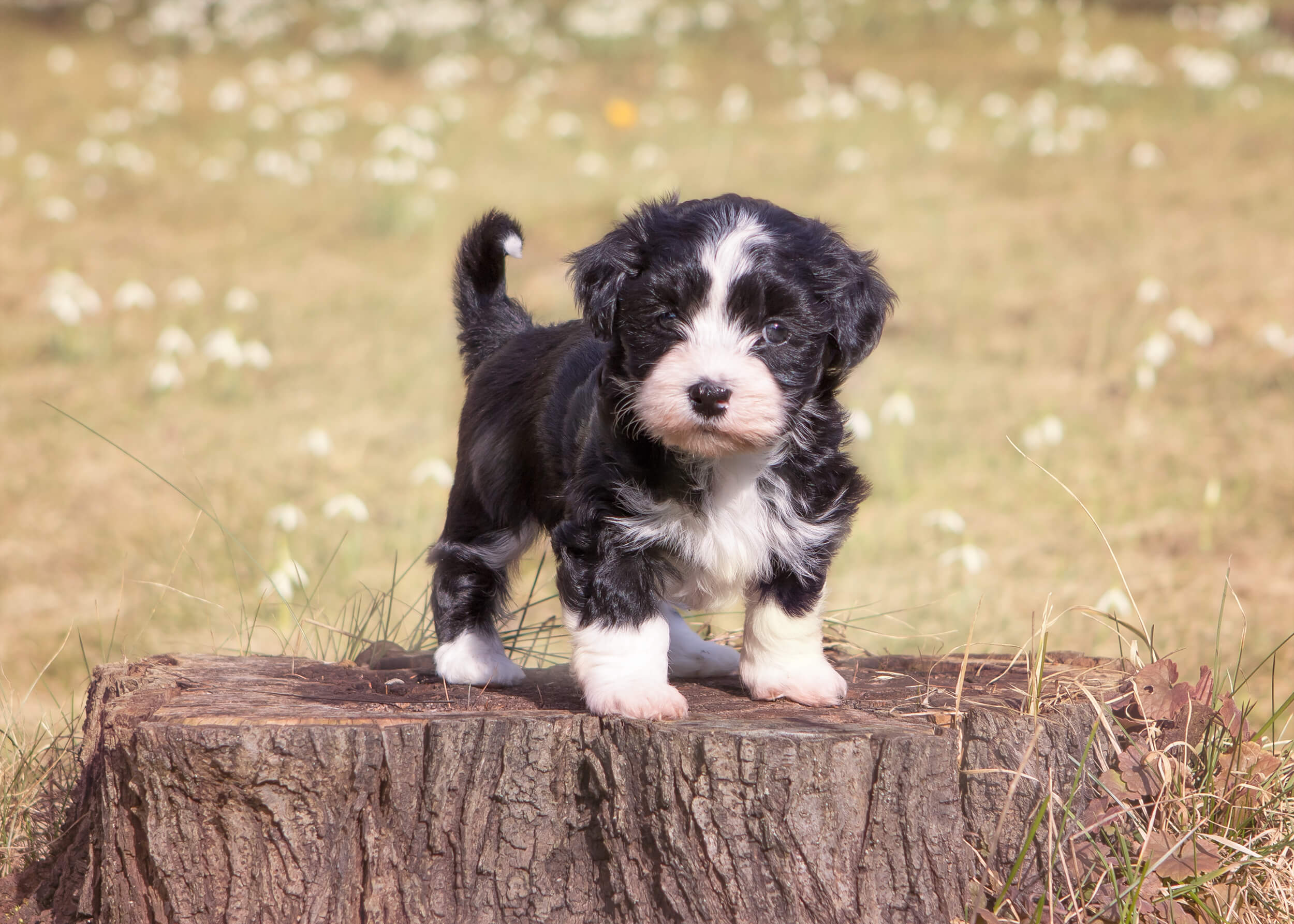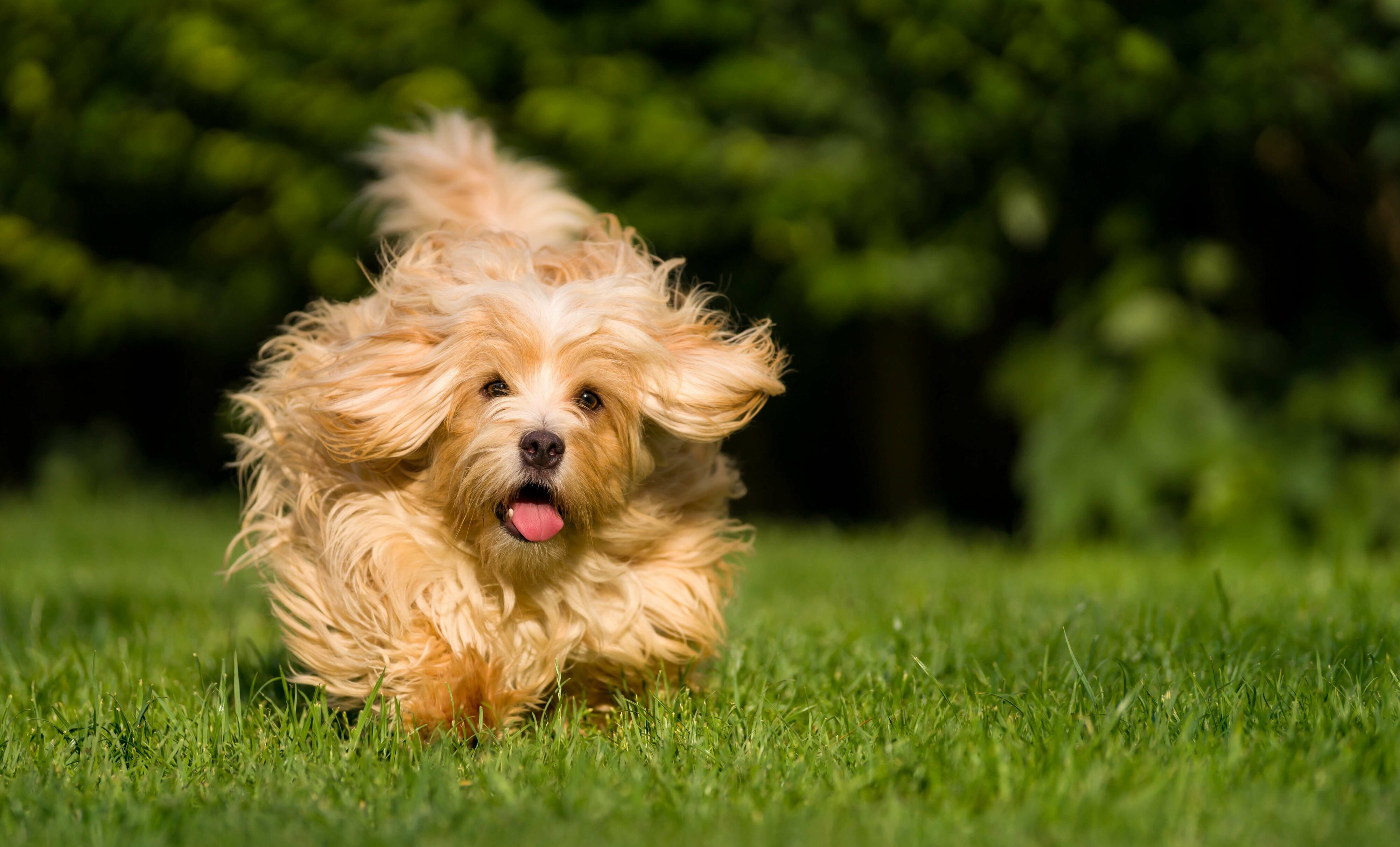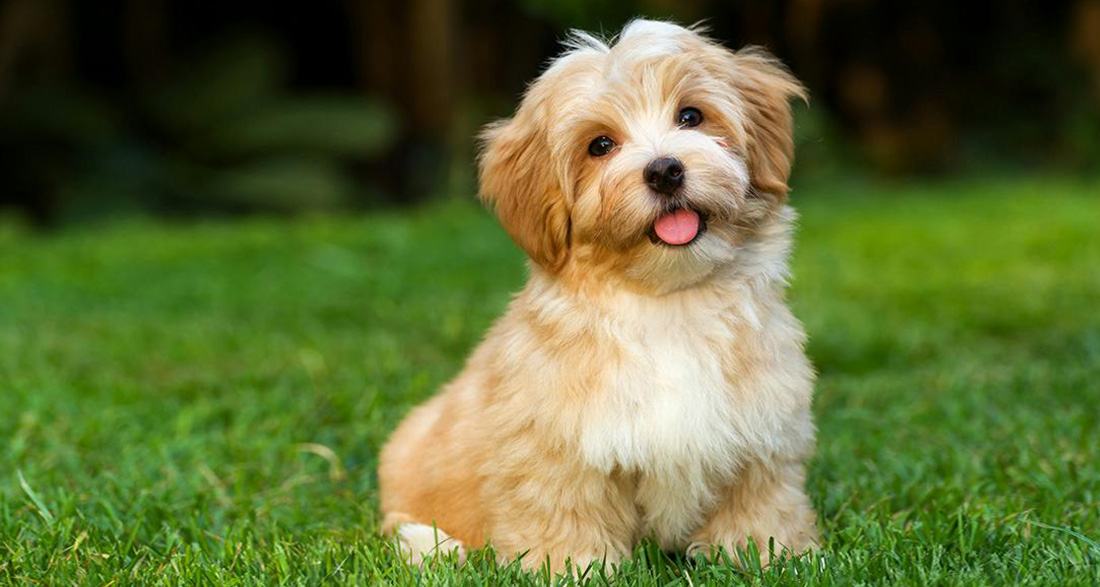The fluffy coat, cute look and friendly nature make the Havanese a great companion dog. Here you can find out what makes these popular dogs so unique.
History of the Havanese
As the name suggests, the Havanese originally comes from the Cuban capital Havana. However, the first similar dog breeds already existed in the western Mediterranean region in ancient times. Spanish and Italian sailors brought their small Bichons to the Caribbean island in the 15th century. There, the breed as we know it today slowly developed. The dogs were used there as companion dogs for the aristocracy and were intended as gifts for high-ranking guests.
From the 19th century onwards, some Europeans brought the cute dog back home with them from their travels. Even Queen Victoria owned a representative of the breed for a time. Over the course of the century, the popularity of the dogs declined and only a few families in Cuba continued to breed them. After Fidel Castro came to power, the aristocrats fled the country along with their dogs.
With only eleven dogs left, they continued breeding in the USA and had to expand the gene pool. The breed got its name because of its origins and the unique Havana-brown coat coloration that often occurs. Internationally, the breed is classified in FCI Group 9.1 Bichons and related breeds.
Breed Overview
GROUP: Toy
HEIGHT: 8.5 to 11.5 inches
WEIGHT: 7 to 13 pounds
TEMPERAMENT: Intelligent, playful, bright, even-tempered, companionable
COAT: Double coat that is long, silky, and straight or wavy with ringlets
COAT COLOR: One or two colors including black, silver, white, cream, tan, fawn, gold, sable, or red
HYPOALLERGENIC: Yes
LIFE SPAN: 13 to 15 years
Nature and character
The Havanese is a curious and friendly family dog that loves to please its family. They are uncomplicated, adaptable and open-minded towards other people and animals. For this reason, the breed is suitable for beginners and makes a great everyday companion. These fluffy dogs get on well with children and love to play. They are intelligent and skillful, so they learn small tricks in no time at all. As good companion dogs, they like to be the center of attention and never want to be left alone. They prefer to follow their humans everywhere and at all times. Unlike some other small dog breeds, Havanese are not barkers and rarely bark in greeting.
| Affection Level | High |
| Friendliness | High |
| Kid-Friendly | High |
| Pet-Friendly | High |
| Exercise Needs | Medium |
| Playfulness | High |
| Energy Level | Medium |
| Trainability | High |
| Intelligence | Medium |
| Tendency to Bark | Low |
| Amount of Shedding | Low |
Buying a Havanese
What should I look out for when buying?
Before you buy a Havanese, you should ask yourself whether you have enough time to care for and keep your little one occupied. Due to its small size, it can easily be kept in a smaller apartment, but needs plenty of exercise. As with any other dog, daily walks are the order of the day with the little Cuban. A big advantage compared to other long-haired dogs is the odorless coat and the lack of shedding. His character makes him a good beginner’s dog, but he does not like to be left alone. If the dog moves in with you, he would love a vacation with a dog, because he loves to be by his humans’ side everywhere.

Raising the puppy
Once you have decided on a Havi, it is important to find a reputable breeder. It is best to look for a breeder who is affiliated to the American Kennel Club (AKC). and has experience in breeding. Here you can follow the puppy’s development from the beginning until it moves in with you. You can expect to pay between $1,000 and $1,500 for a purebred puppy with a health check and vaccinations. If you are lucky, you may also find a good-natured Havanese at an animal shelter that has got into trouble through no fault of its own. Here you pay a lower price and do something good at the same time.
You don’t need any special knowledge or experience to train a Havanese. The small dogs are very friendly and usually try to please their owner. Nevertheless, you must be careful not to let the puppy’s cute eyes and fluffy fur “wrap you around their paws”. To support and encourage the Havanese’s friendly nature, it needs loving and non-violent training. Consistency is absolutely essential so that the dog knows exactly what you want from it. Early socialization and getting used to unfamiliar people and animals is also very important. Attending puppy school and later dog school is recommended so that the little one comes into contact with other dogs and obeys them.
How do I keep a Havanese?
Activities with the Havanese:
Even if the Havanese looks like a cozy “lap dog”, it needs a lot of activity. He likes to be the center of attention and loves it when everyone is busy with him. It is not without reason that many circuses use the breed as an attraction. The little rascals love to learn new tricks and present them proudly. Whether it’s ball games, throwing sticks or intelligence games – these active dogs are always on fire.
Daily walks are of course a must. But the dog is also happy to be kept busy indoors. In summer, you should give your dog the opportunity to splash around in a lake and cool off. If you like dog sports, you should not overtax the lively Havanese, but you can easily get him interested in agility or dog dancing.

Health and care
Especially in the first two years of life, a dog’s growing coat needs to be groomed daily so that it becomes lush and silky. Daily brushing is a must and you should prepare your dog for this from an early age. Even later on, long-haired dogs still need extensive grooming to prevent the hair from matting. However, although the coat makes such a thick impression, it is not suitable for protecting against the cold. As he has no undercoat, you should not leave him outside for too long in cold temperatures and possibly put on a coat, but not a coat. Heat and tropical conditions cause fewer problems for the little dog.
Interesting facts and information
- There are short-haired Havanese, but they are not recognized by the general breed standard and are therefore very rare.
- The British author Charles Dickens owned a Havanese called Tim.
- Even though it is rarely found on the island today, the breed is considered the national dog of Cuba.
- Many representatives of the breed have a spotted belly, which they like to show off when they have it scratched.
Do you also have a Havanese or want to get one? Tell me in the comments what you think makes them so special!


